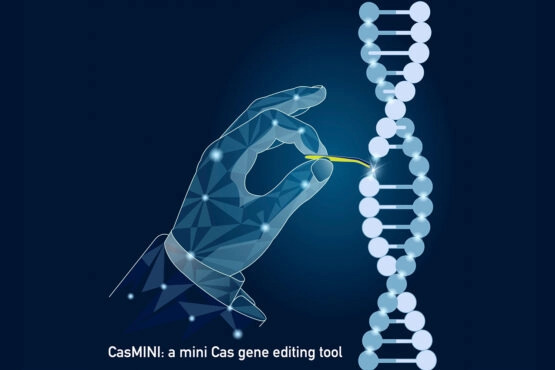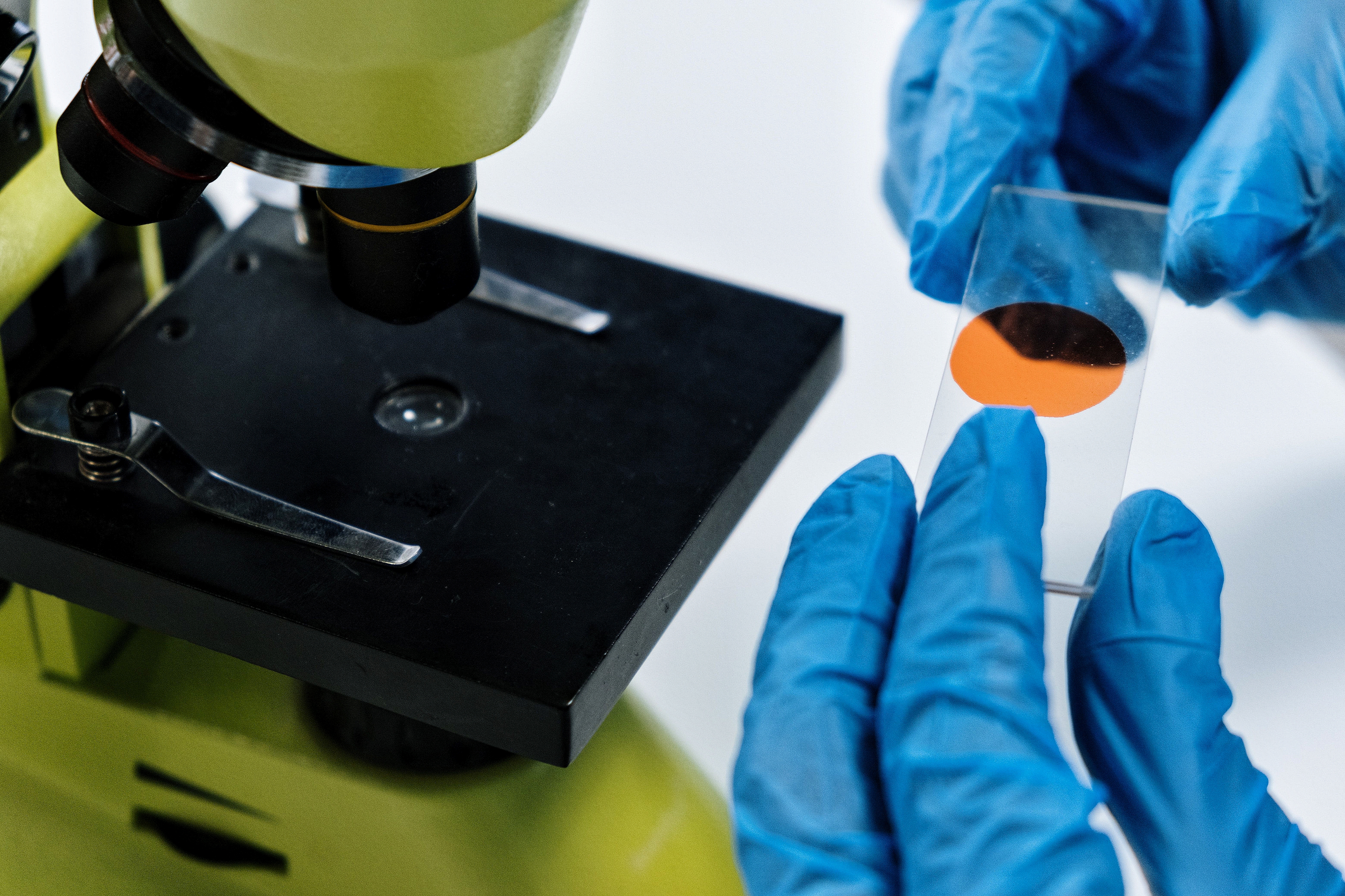创新背景
许多正在使用或正在进行临床测试的用于眼睛、肝脏和大脑疾病基因治疗的不同CRISPR系统的应用范围仍然有限,因为它们都有同一个缺陷:它们太大了,因此很难输送到细胞、组织或生物体中。
创新过程
发表在《分子细胞》(Molecular Cell)上的一篇论文中,Qi和他的合作者宣布了他们认为是CRISPR向前迈出的重要一步:一个高效、多用途的迷你CRISPR系统(CasMINI)。常用的CRISPR系统——如Cas9和Cas12a表示不同版本的CRISPR相关(Cas)蛋白质——由大约1000到1500个氨基酸组成,而“CasMINI”只由529个氨基酸组成。
研究人员在实验中证实,CasMINI可以以比同类更强大的功能删除、激活和编辑遗传密码。它更小的体积意味着它应该更容易进入人体细胞和人体,使其成为治疗各种疾病的潜在工具,包括眼病、器官退化和一般的遗传疾病。

为了使系统尽可能小,研究人员决定从CRISPR蛋白Cas12f(也被称为Cas14)开始,因为它只包含大约400 - 700个氨基酸。然而,像其他CRISPR蛋白一样,Cas12f天然来源于古生菌(单细胞生物),这意味着它不太适合哺乳动物细胞,更不用说人类细胞或身体了。目前已知,只有少数CRISPR蛋白未经修饰就能在哺乳动物细胞中工作。不幸的是,CAS12f不是其中之一。这使得它成为像Qi这样的生物工程师的一个诱人的挑战。
事实上,气实验室的博士后学者、该论文的第一作者徐晓舒(音译)认为,人类细胞中没有自然Cas12f的活性。Xu和Qi假设,问题在于人类基因组DNA比微生物DNA更复杂,更难接近,使得Cas12f很难在细胞中找到它的靶点。通过观察计算预测的Cas12f系统的结构,她仔细地选择了蛋白质中的大约40个突变,这些突变可能会绕过这一限制,并建立了一次测试许多蛋白质变体的管道。理论上,一种可行的变体可以通过激活人类细胞基因组中的绿色荧光蛋白(GFP)使其变绿。

据研究人员表示,一开始,这个系统有一年根本不起作用,但经过反复的生物工程,一些工程蛋白开始启动。第一批成功的结果并不算大,但它们让Xu感到兴奋,鼓励她继续前进,因为这意味着这个体系是有效的。在许多额外的迭代中,她能够进一步提高蛋白质的性能。除了蛋白质工程,研究人员还设计了引导Cas蛋白到达目标DNA的RNA。对这两个组成部分的修改对于CasMINI系统在人类细胞中工作至关重要。他们测试了CasMINI在实验室人类细胞中删除和编辑基因的能力,包括与艾滋病毒感染、抗肿瘤免疫反应和贫血相关的基因。它几乎对他们测试的每一个基因都有效,其中几个基因反应强烈。
创新价值
CasMINI的小体积使它更容易被输送到人类细胞、组织和身体进行基因治疗。
创新关键点
通过观察计算预测的Cas12f系统的结构,研究人员仔细地选择了蛋白质中的大约40个突变,这些突变可能会绕过这一限制,并建立了一次测试许多蛋白质变体的管道。
Innovative development of a "mini" CRISPR genome editing system
In a paper published in Molecular Cell, Qi and his collaborators announce what they believe is a major step forward for CRISPR: an efficient, multipurpose mini CRISPR system (CasMINI). While commonly used CRISPR systems -- such as Cas9 and Cas12a represent different versions of CRISPR-associated (Cas) proteins -- consist of about 1,000 to 1,500 amino acids, "CasMINI" is made up of just 529 amino acids.
In experiments, the researchers confirmed that CasMINI can delete, activate and edit the genetic code with more power than its peers. Its smaller size means it should be easier to enter human cells and the body, making it a potential tool for treating a variety of diseases, including eye diseases, organ degeneration and genetic disorders in general.
To make the system as small as possible, the researchers decided to start with the CRISPR protein Cas12f, also known as Cas14, because it contains only about 400-700 amino acids. However, like other CRISPR proteins, Cas12f is naturally derived from archaea (single-celled organisms), which means it's not well suited to mammalian cells, let alone human cells or bodies. Only a few CRISPR proteins are known to work unmodified in mammalian cells. Unfortunately, CAS12f is not one of them. That makes it a tantalizing challenge for bioengineers like Qi.
In fact, Xiaosu Xu, a postdoctoral scholar in the Qi Lab and lead author of the paper, argues that there is no natural Cas12f activity in human cells. Xu and Qi hypothesized that the problem is that human genomic DNA is more complex and less accessible than microbial DNA, making it difficult for Cas12f to find its target in cells. By looking at the structure of the computationally predicted Cas12f system, she carefully selected about 40 mutations in the protein that might circumvent this limitation and built pipelines to test many protein variants at once. In theory, a viable variant could turn human cells green by activating the green fluorescent protein (GFP) in their genomes.
At first, the system didn't work at all for a year, but after repeated bioengineering, some of the engineered proteins turned on, according to the researchers. The first successful results were modest, but they excited Xu and encouraged her to keep going because it meant the system was working. In many additional iterations, she was able to further improve the performance of the protein. In addition to protein engineering, the researchers also designed Rnas to guide Cas proteins to their target DNA. Modifications to these two components are essential for the CasMINI system to work in human cells. They tested CasMINI's ability to delete and edit genes in human cells in the lab, including those associated with HIV infection, anti-tumor immune responses and anemia. It worked for almost every gene they tested, and several responded strongly.
智能推荐
临床医学创新 | 创新利用天然卵泡抑素可预防肾脏损伤
2022-09-30研究人员发现了一种自然产生的激素可能有助于克服化疗耐药性,防止肾脏损伤。
涉及学科涉及领域研究方向药物摄入可能会增加高温引起的心肌梗死风险
2022-08-02耶鲁大学的陈凯团队通过对2494名患者的数据进行研究分析,认为服用抗血小板药物和β受体阻滞剂这两种常规心血管疾病治疗药物,将会提升患者非致命高温相关的心脏病风险。这一发现可以有助于开发针对性策略,降低与温度上升有关的心血管疾病负担。
涉及学科涉及领域研究方向心血管病学创新 | 创新利用新型基因编辑疗法可有效治疗心力衰竭
2022-11-09根据UCL领导的一项试验的早期结果,对患有导致心力衰竭的疾病的人的首创基因编辑疗法在短期内是安全的,并可能阻止疾病进展。
涉及学科涉及领域研究方向国际研究团队利用人工智能发现心肌病患者体内的异常突变
2022-08-17研究团队对已知或未知遗传原因的心肌病患者以及无结构性心脏病对照组的心脏样本进行了单核RNA测序,确定了关键细胞类型及其在心脏中的位置、细胞相互作用和生物信号通路,为健康和疾病状态下的心脏生物学提供了见解。
涉及学科涉及领域研究方向